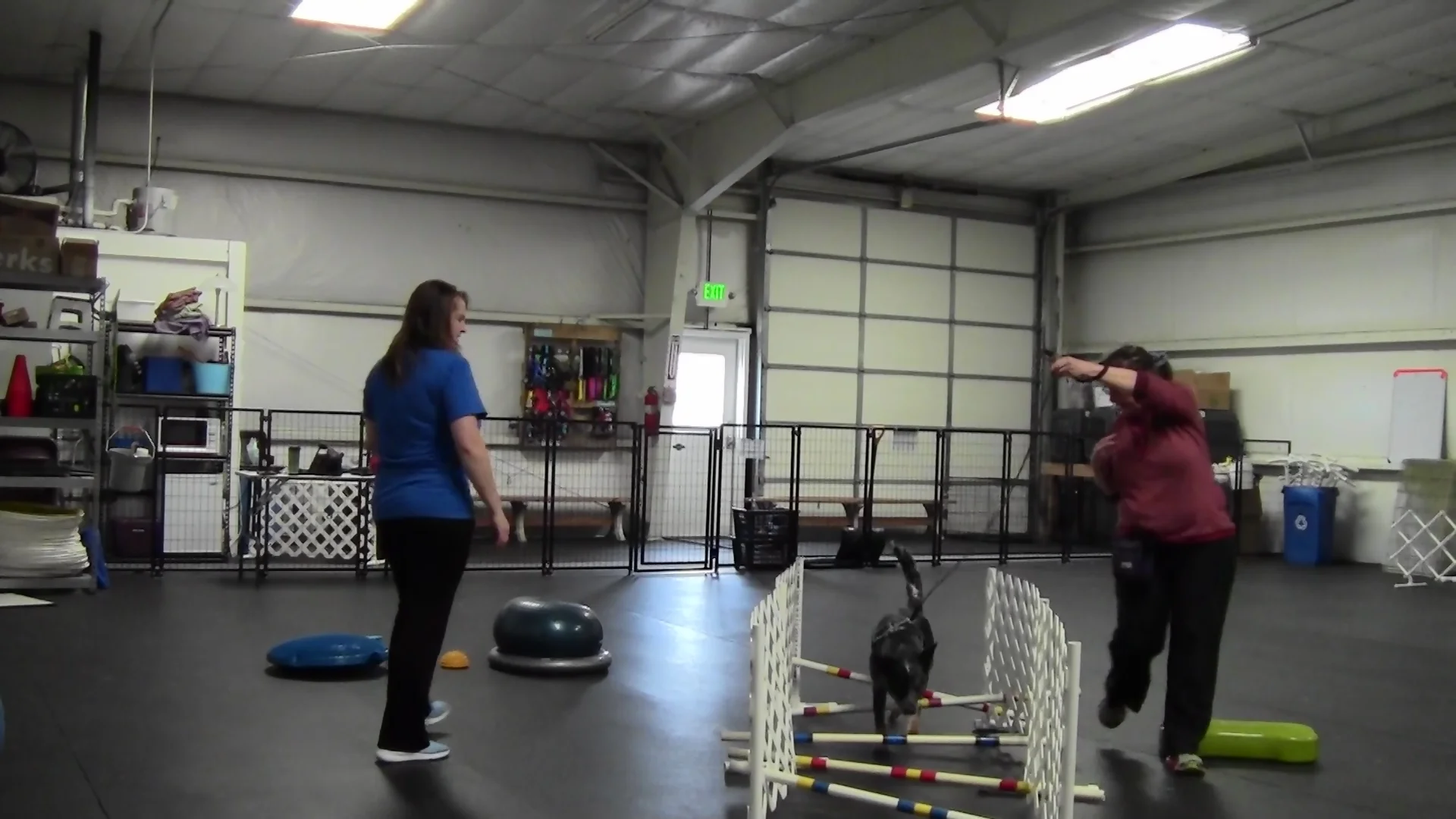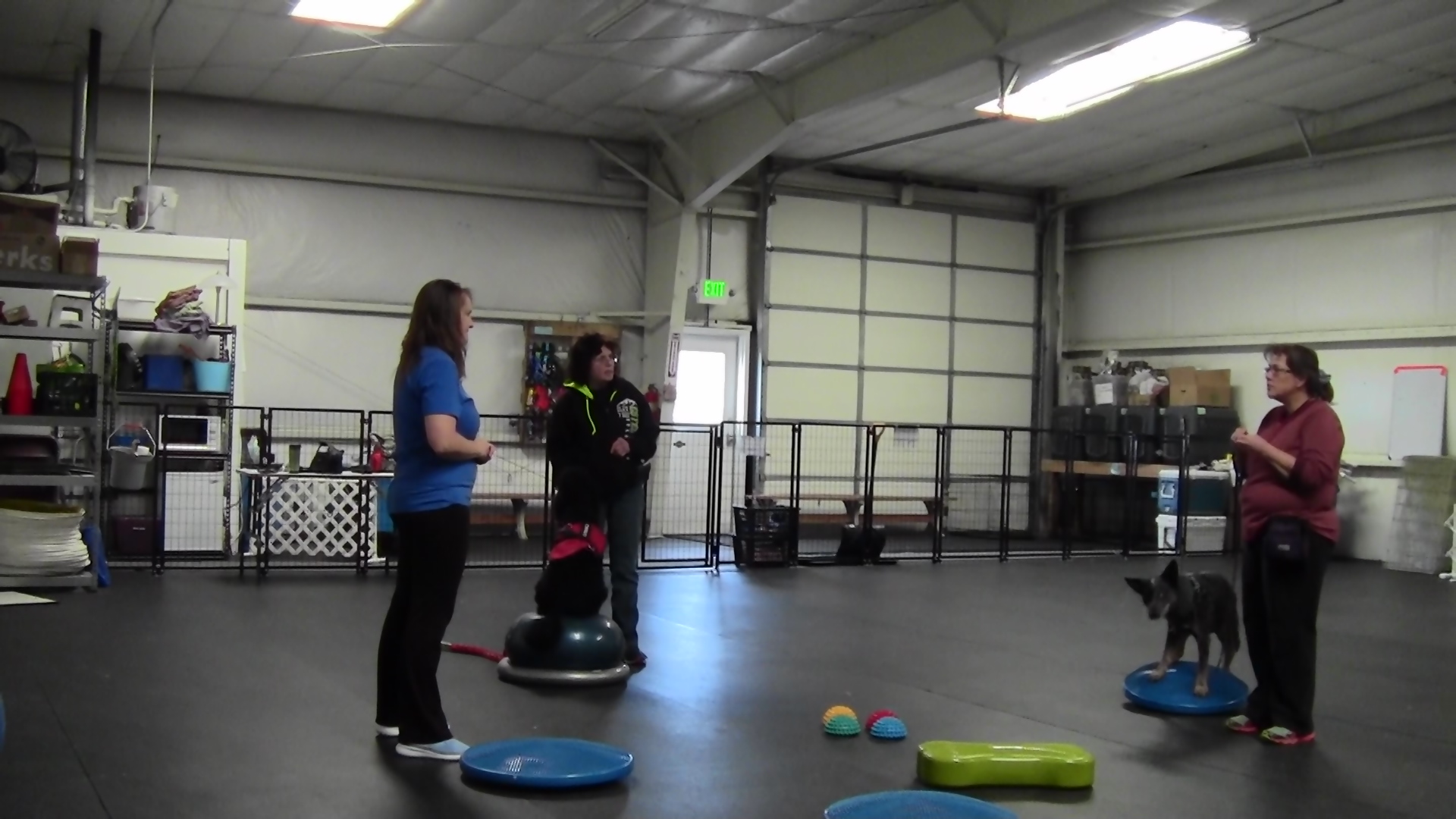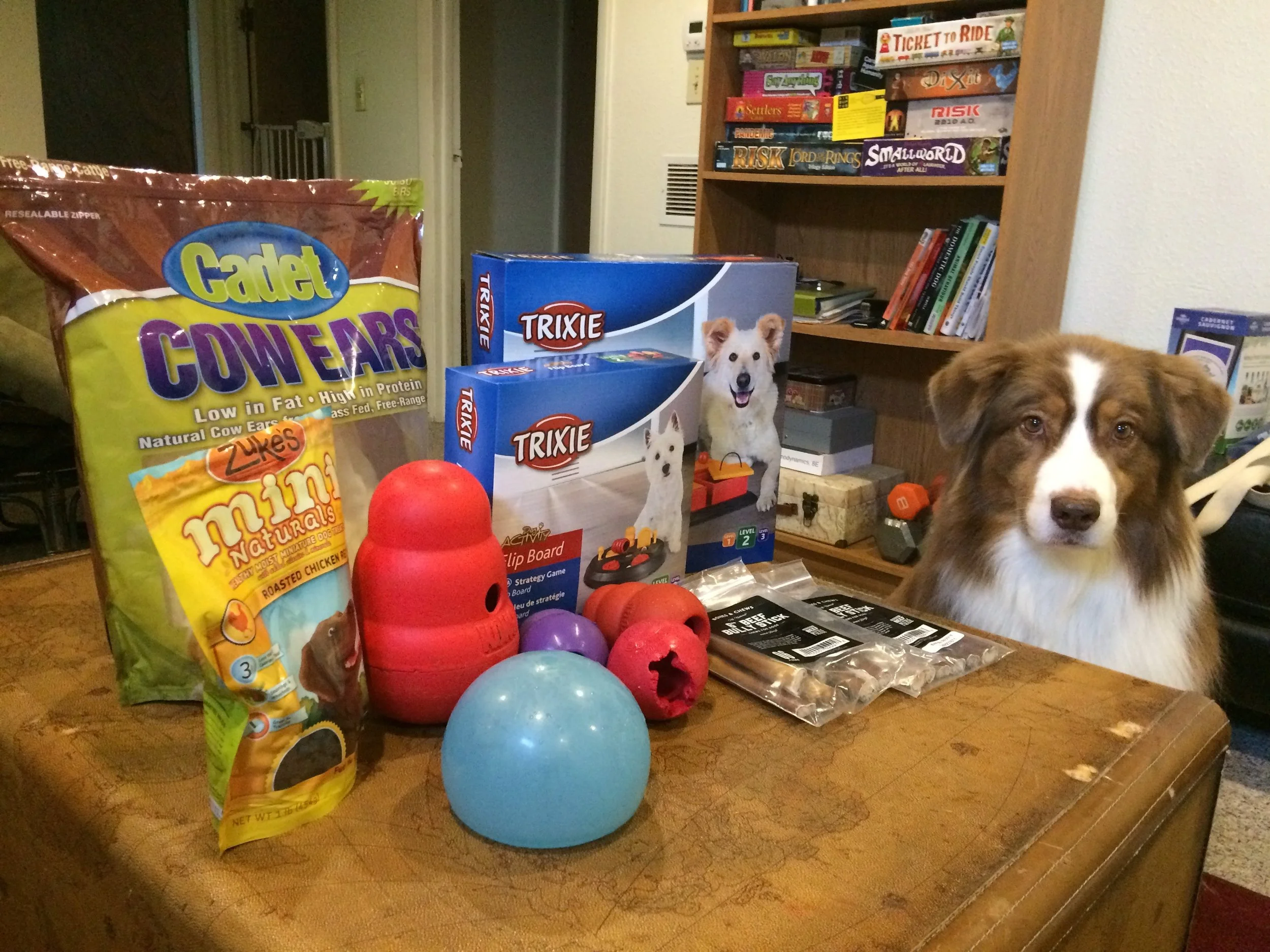Supporting Your Leash-Reactive Dog
By Benah Stiewing
A dog who barks, lunges, and experiences elevated stress when another dog or person appears during a walk is a difficult habit for you and your dog to experience. The word “reactive” is a label we use to describe a certain set of behaviors that dogs exhibit
under specific conditions, such as exposure to a “trigger” like another dog or person. Since we all might have slightly different visions of what a “reactive” dog looks like, below are some of the behaviors that might put your dog into this category. Having a dog who displays any of the below behaviors is stressful at best and extremely emotionally draining at worst for both you and your dog.
Fixation on the trigger (orienting towards, unable to turn away)
Pulling toward the trigger
Hard staring (no blinking, jaw stiff, often includes a freeze as well)
Barking
Lunging
Snapping / Biting
Though your dog’s reactivity may be frustrating and invoke anger from you or folks on the receiving end of their reactive behavior, it’s important to understand that your dog is having a bad time, not being bad. All behavior is affected by what comes before it (antecedents) and what comes after it (consequences). Understanding this sequence can help us understand why your dog does what they do, and how we may successfully modify undesirable behavior, like leash reactivity.
Antecedent: whatever happens BEFORE the behavior. (e.g. trigger entering the
environment, a cue that you give, etc.)
Behavior: whatever observable actions the dog takes following an antecedent (e.g.
whine, bark, lunge, respond to your cue, etc.)
Consequence: whatever happens AFTER the behavior. (e.g. the trigger leaving the
environment, the trigger getting closer, the dog being pulled from the environment, you
delivering a tasty treat, etc.)
We can visualize the whole sequence like this: Antecedent → Behavior → Consequence
To understand how to modify behavior and change the reactivity we see in our dogs, it is helpful
to think about what consequence the dog might get out of the behavior they are currently
choosing. What function does the reactive behavior serve for the dog? If a dog’s behavior functions in a way where the consequence is advantageous to the dog (i.e. it is something the dog wants), the behavior is more likely to occur again in the future. For example, if your dog barks at another dog on a walk, and what your dog really wants is for that dog to go away, when the other dog walks away with its human, your dog will learn that the most effective way to achieve their goal is to bark at dogs that make them uncomfortable.
This is important to understand because a critical key to behavior modification is to prevent rehearsal of the undesirable behavior. The more the behavior is practiced (and reinforced), the stronger the behavior will become. To prevent undesirable behavior, we need to understand your dog’s threshold. Threshold is the term we use to describe the point at which a dog transitions from a comfortable state of mind to a more distressed mental state, in which we see outward behavioral symptoms of their discomfort (i.e. reactive behaviors). Before we are able to effectively modify a dog’s behavior, we need to recognize situations that cause them to become distressed and work to prevent them so we can keep our dogs comfortably just below that threshold level while we teach them new coping skills.
Things that can bring a dog over threshold:
A separate event that has caused the dog stress recently - i.e. a thunderstorm during the night before or a recent vet visit.
A trigger becoming more intense and/or coming closer to you - i.e. dog walking towards
you rather than away.
The dog being tired / hungry / thirsty (like at the end of a walk)
Encountering multiple triggers in a row / at the same time - this is called trigger stacking.
The goal threshold for training sessions with our reactive dogs fluctuates at the borderline between their comfort-zone (no reactions) & over-threshold (big reactions), and well within their comfort-zone. We want to give our dogs exposure that will help them learn, and then contrast that exposure with easy recoveries at a distance where they feel as comfortable (and non-reactive) as possible. Initial learning (such as foundation skills like focusing on you, responding to basic cues, etc.) is best done well below the comfort-zone threshold line. If you are trying to teach your dog new skills for the very first time at or above their level of comfort, this will be very difficult. Start by rehearsing good behaviors and skills in practice areas where your dog feels most comfortable, like your living room or your backyard.
Our goal through behavior modification is to create a different set of behavior patterns for our
reactive dogs that fit better into our human expectations of appropriate canine behavior. In order to help our dogs do this, we need to set them up for success with some environmental management. This means facilitating situations where our dogs can be successful and guiding them, through our training, to make better choices. Management comes into play to prevent our dogs from rehearsing the unwanted behaviors until the dog has a better behavior built up to replace the reactive behavior. Pushing your dog into uncomfortable situations just because they haven't reacted yet is not necessarily setting them up for success. They don’t need to cross their threshold to learn!
Management ideas:
Cross the street or duck behind a car if a dog is approaching and you won’t have the space you need for your dog to be successful.
Install visual barriers on your windows and play white noise so your dog can’t practice their reactivity in the home.
Behavior modification is the process by which we teach our reactive dogs a different set of
feelings and, most importantly, behaviors about situations they would typically default to reactive
behaviors. To help change your dog’s current association to the sight of other dogs, we provide VERY HIGH VALUE treats (think diced chicken, liverwurst, and hotdogs) when your dog is in the
presence of other dogs (or other triggers). Over time, and with proper desensitization, your dog will learn to associate the presence of other dogs with yummy things. Your mantra should be “good things happen for my dog when other dogs are around!” We would prefer if the presence of another dog was a happy, exciting event for your dog. Our goal is for your dog to see another dog and immediately look to you as if to say, “Yipee! I see another dog! That means I get chicken, right?!” No barking or lunging, just an excited, expectant look on your dog’s face.
Behavior modification is a complex task, and if you are struggling with leash reactivity we recommend seeking the support of a certified trainer. This post barely skims the surface of all the components that could be part of a leash reactivity training plan! Consider starting with our Reactivity in Dogs Webinar that dives deeper into the complexities of this behavior, and how we may support our dogs in developing different behaviors around their triggers.
If you want additional support for you and your dog, we offer in-person Group Classes and Private Lessons for reactive dogs in Fort Collins, Colorado and Chatham, New York, and virtual coaching right in the comfort of your home. As you work through your dog’s leash reactivity, it’s vital to remember that your dog isn’t giving you a hard time, they are having a hard time - the more we can understand this, the better we may serve our dogs.
Summit Dog Training offers group dog training classes & private lessons in Fort Collins, Colorado, as well as online self-study courses & online private lessons for education on how to live the best life with your dog! If you are looking for more training support, please don’t hesitate to contact us! We’d love to help you and your dog get ready for any adventure.

















